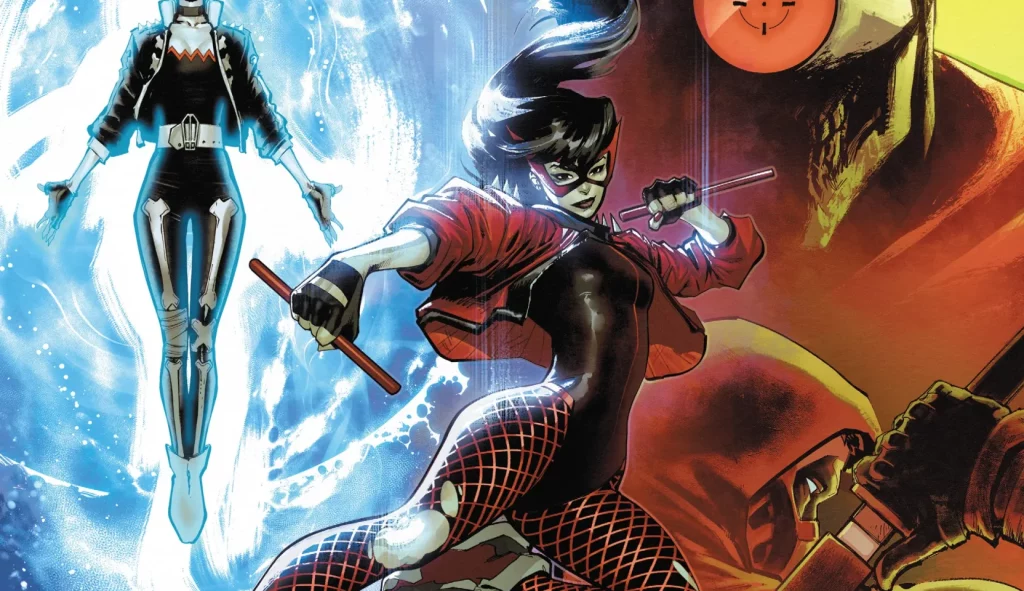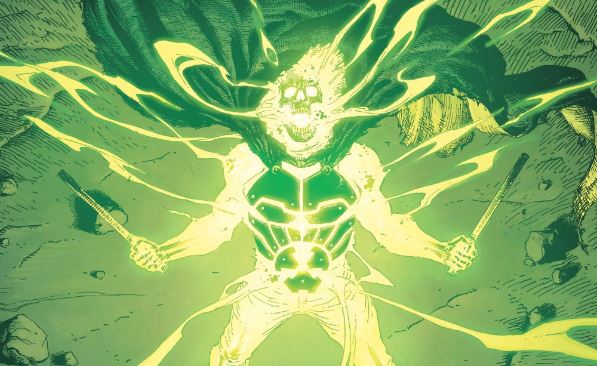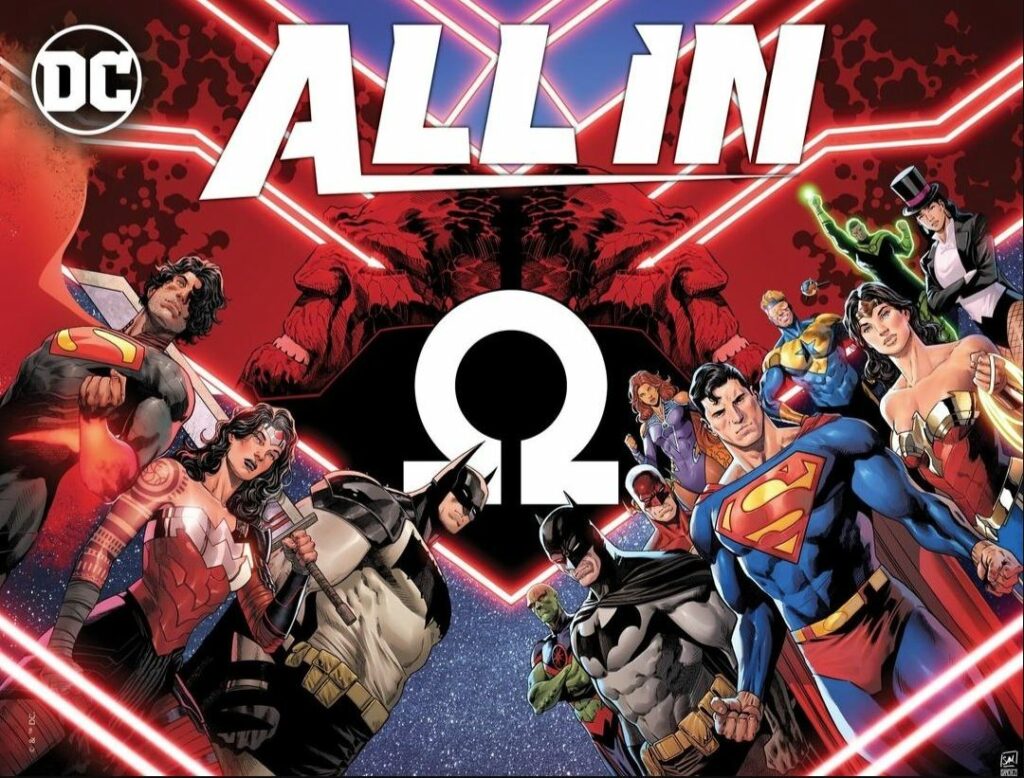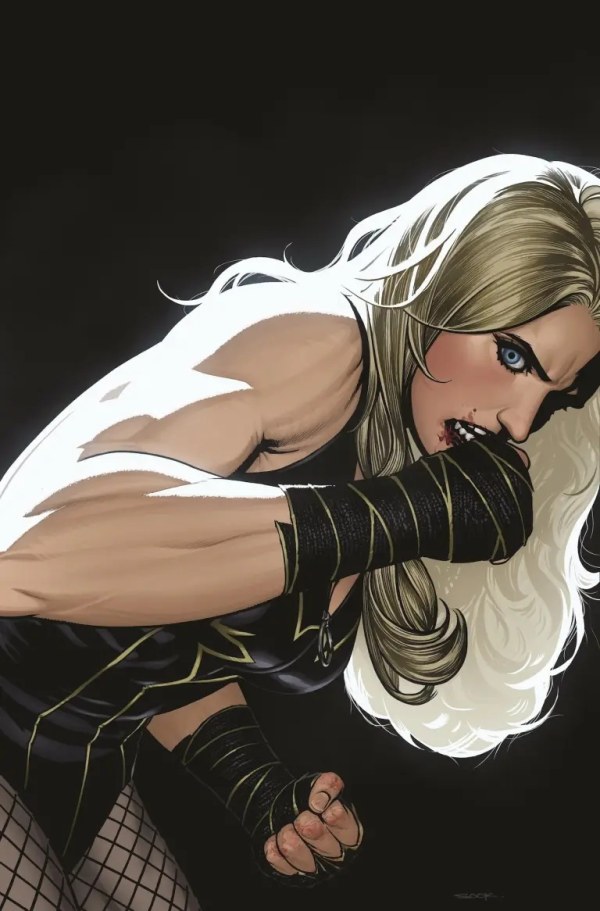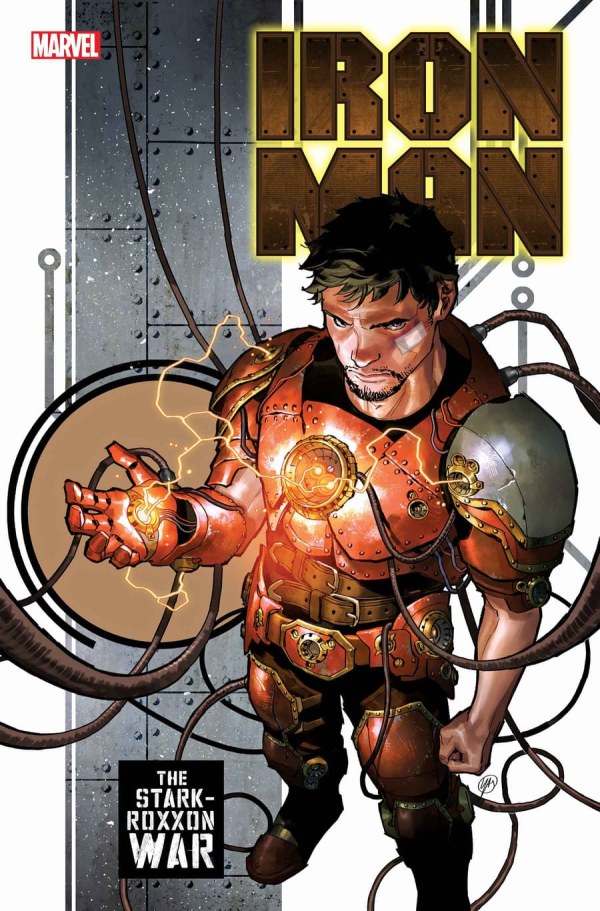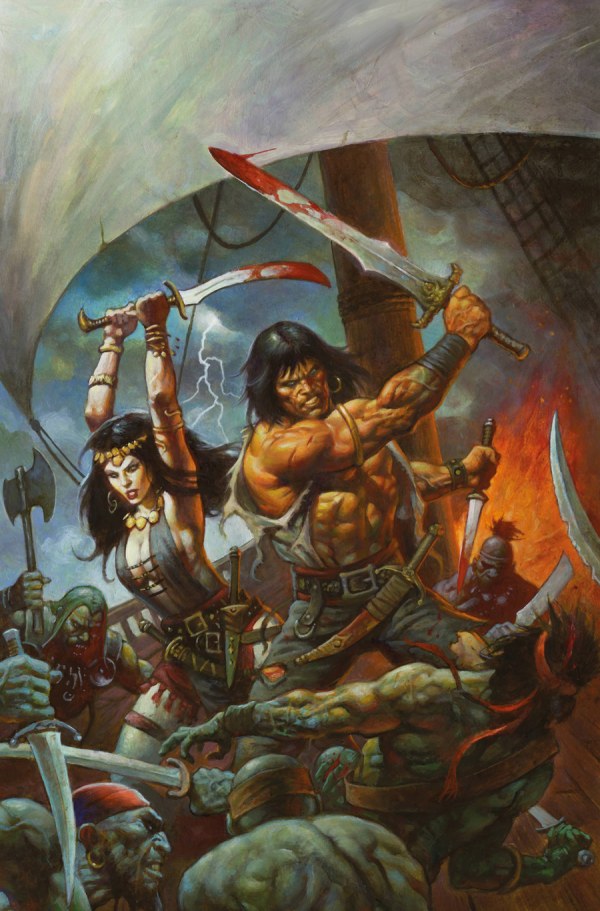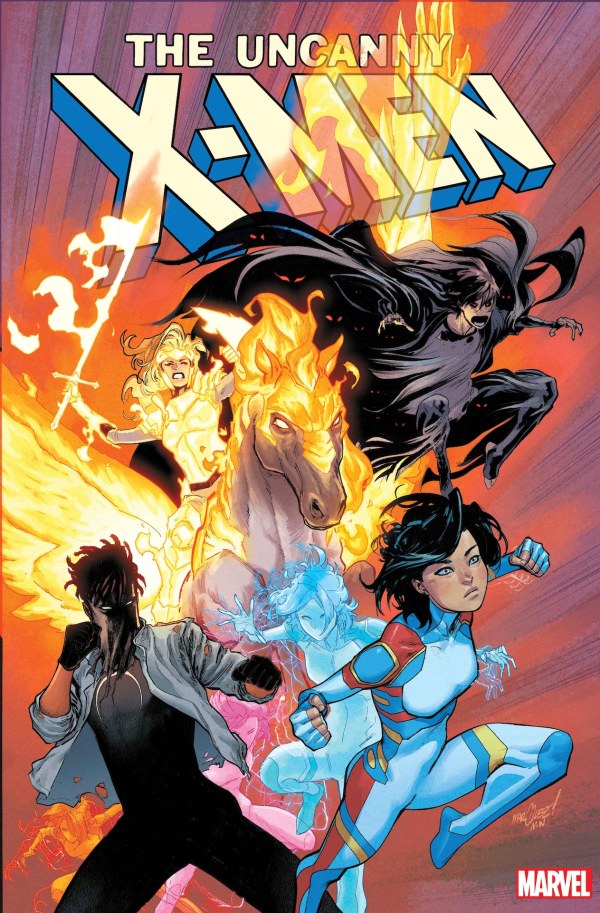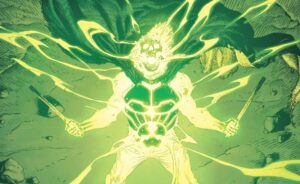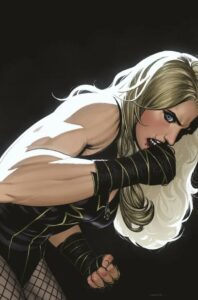Each issue of DC Comics’ January 2023 event Lazarus Planet introduced readers to new characters, new status quos and new voices – and nowhere is that more pronounced than in Lazarus Planet: Next Evolution.
What set this issue apart was its promotion both of new writers and artists but also its re-examination of underserved subgenres within the superhero genre. Specifically, all the creators that worked on this issue have either never helmed ongoing series or, in the case of Ram V, Chuck Brown and Alitha Martinez, have only seen prominence in very recent years.
As such, the promise of this issue was high – what could the newest generation of talent at DC bring to the table? What genres were they interested in working within, and which corners of the DCU might see new exploration in the months that followed Lazarus Planet? Unfortunately, this issue stood out at the time as the first misfire in an otherwise fantastic series.
Early year mini-events don’t always hold the greatest reputation in Big-2 comics, and Lazarus Planet was bucking the trend with genuinely imaginative short stories, all bleeding out of a central conflict and that, for the most part, all seemed to have purpose. This didn’t feel like a throw-things-at-the-wall-and-see-what-sticks type initiative. Readers already knew of multiple plot threads that were being introduced here only to spin out within months into other books. Jon Kent’s power upgrade would follow him into Adventures of Superman: Jon Kent; Mercy Graves’ new situation would be reflected in Joshua Williamson’s Superman, etc. Indeed, there were strong indications (that were quickly confirmed) that The Vigil, Ram V and Lalit Kumar Sharma’s new team of Indian super-vigilantes, would spin off into their own title. In contrast to events like Convergence of even Future State, there was a co-ordinate effort from DC to assure readers that Lazarus Planet mattered.
And so, Lazarus Planet: Next Evolution brought with it a choir of new voices, each adding their own new sounds and tunes into DC canon. Some of those voices rang true, and others fell short of perfect harmony.
Lazarus Planet: Next Evolution – “The Vigil: See No Evil”
This collection opens with the aforementioned Red Hood tale from Carnage, Venom and Detective Comics scribe Ram V and Daredevil artist Lalit Kumar Sharma. Here, Red Hood is tracking a rogue shipment of Lazarus Resin (the loosest of connections to the overarching event) and stumbles upon V’s new superhero team The Vigil in the process.
What struck me initially was the passivity of the piece. Ram V has Jason Todd narrate the first half of the story with an understated sense of recollection, musing rather indifferently about how he finds himself in such dramatic situations as jumping from an exploding bridge so often. It’s a strange choice, especially as it lacks some of the sardonic self-deprecation one might have come to expect from Jason’s introspection under the pens of others like Lobdell. Rather than revealing anything about the character, it reads more like Red Hood reciting an instruction manual.
‘Then a bloodied and bruised chase through the warehouse district next to the Gotham docks,’ one page opens, followed by, ‘As I’m chasing the courier across a bridge to the boathouse… I notice he’s left me a gift at the barricaded door. Then a marine engine sputters to life below me… so I take the nearest exit.’
Knowing how stylistically adept V is from both his Swamp Thing and Detective Comics work, I’d hoped that this patter was deliberate. In my mind, it was leading to some surprising or hilarious twist later on, the exaggerated nature of which would be underscored by Red Hood’s seeming lack of reaction. Only, it doesn’t. Everything resolves with another fairly boilerplate treatment, as the story eventually introduces the real stars of the show, The Vigil.
It all contributes to the feeling of incidentalism regarding Red Hood. It could have been any vigilante that stumbled upon The Vigil – it just so happened to be one that DC could market.
Now in fairness, there are some attempts at that charming sense of understatement – ‘The escort had backup. Lots of backup’, ‘No welcoming committee? I’m almost disappointed’ – but it all comes off as a half-baked attempt to evoke 90’s style action captions. Lazarus Planet: Next Evolution is clearly built to drum up excitement for the new types of stories we’ll see in the year to come, which makes this outmoded sense of voice all the more incongruent. While I’m sure Ram V is passionate about his new creations, large swathes of the text at hand read both as uninterested and uninteresting when it comes to introducing this new corner of the DCU.
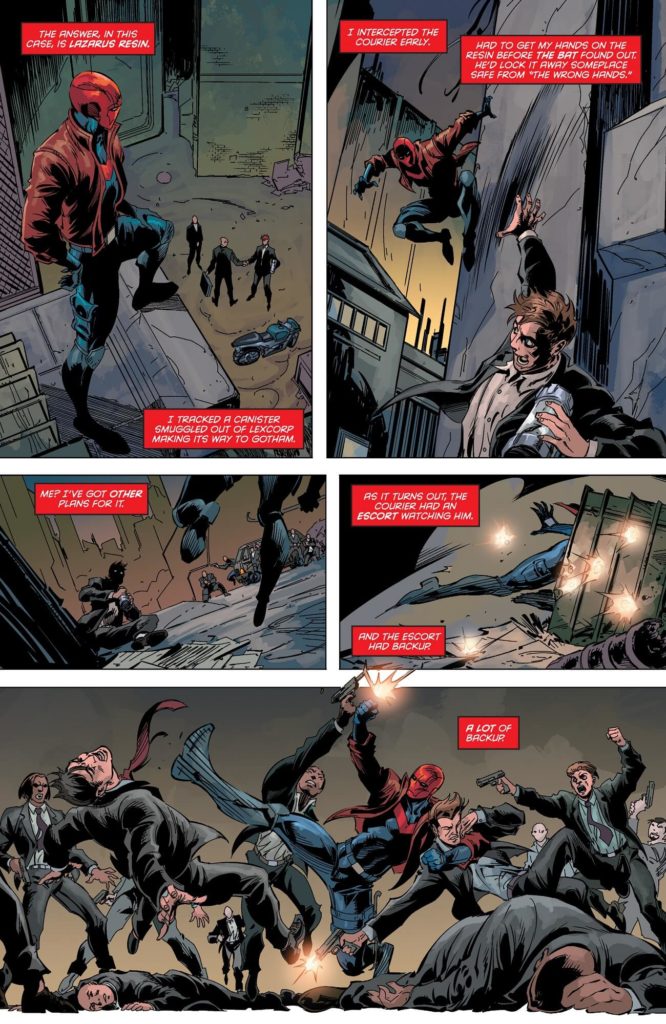
This sense that the story is at odds with itself extends, in a way, to Sharma’s art too. While on a technical level I want to compliment how expressive and dynamic the figurework is, how Sharma’s Red Hood really occupies the page in a way some superhero art forgets to do these days, it also feels slightly incongruent with how I expect to see the character represented.
Unlike perhaps every other Robin, Jason is the least defined by his acrobatics and swiftness. He doesn’t fight with the balletic grace of Nightwing, or the rhythm of a fighter as forward thinking as Tim Drake. By contrast, I prefer Jason to be rendered in a more bruiser-esque way: surrounded by foes, covered in the grit and grime that a back-alley fistfight inevitably arrives you at. And while there is a panel in here that gestures at that, his body language throughout is more cat-like in its pouncing and diving and leaping.
Others may have a different relationship with Todd’s presentation here, but I mention it because it’s that same sense of movement and form that works so well in Sharma’s rendition of The Vigil. While Jason comes off as too lithe, our new vigilantes move from panel to panel with this weightless, almost performative element. Where the strength of so many superheroes are characterised by their ability to physically dominate, maim and wound others, its refreshing to see some established whose strength comes from something more beautiful than violent.
All of this culminates in a sense of missed opportunity. Both V and Sharma clearly have a lot of passion and energy for the characters, though it could do with redirection. Case in point, The Vigil could have further been distinguished as an all-new, all-different form of heroism if Red Hood’s pages played more into his traditional depictions, showing in great detail how Gotham’s protectors dole out justice through bloodied knuckles and splintered bones. This, in turn, would serve as a great contrast to the alternative modes of justice these new heroes bring to the table.
While I remain cautiously optimistic about The Vigil’s true debut, it’s hard not to come away from the opening of Lazarus Planet: Next Evolution confused. With these types of events, you’ll always be able to see the corporate wheels turning just behind the page. The truly great ones, however, manage to distract you from the whirring and churning of the IP machine with strong, sentimental bursts of character. Unfortunately, “The Vigil: See No Evil” doesn’t find its voice fast enough to drown out those deeply mechanical sounds.
The Kids Are Alright – Flatline vs Red Canary
Despite the obviously furtive ground for innumerable YA stories – as more and more characters like Jamie Reyes, Miles Morales, Naomi McDuffie and now Red Canary and Flatline proliferate the superhero pantheons – there is surprisingly little space carved out for the YA subgenre within Big-2 comics.
Most major teen heroes tend to be dealing less with modern and relatable issues that a burgeoning adolescent readership can grab onto. Instead, they deal more with larger, more conceptual problems. Our most recent crop of Teen Titans don’t deal as much with interpersonal conflicts or even small, local events like The Judas Contract these days as much as they get conscripted into the War for Earth-3 and subsequently used as cannon (canon?) fodder in Dark Crisis. Everything since Infinite Frontier (or the New 52, or arguably even further back) has been the escalation of bigger and bigger stakes, something that Ritesh Babu speaks to significantly in his DC and The Matter of Crisis series.
Somewhere along the way it feels as if the heart of the superhero myth, that of the relatable tribulations of teen heroes, has gotten lost in the shuffle. The intimate and characterful running commentaries of a character’s inner thoughts has generally been consumed with narrative caption-work dedicated to edifying how grand, how epic everything is, should be, will be. Even the smaller, quieter moments of conversation that typified titles like Ultimate Spider-Man have been slowly whittled away, allotting the real estate instead to more and more set-up (see: above).
Flatline and Red Canary’s stories buck that trend, albeit to varying degrees of success.
Now, credit where credit is due, Lazarus Planet: Next Evolution joins a growing list of efforts that DC Comics have made to re-explore that relatable well of YA-type fiction. Blue Beetle: Graduation Day and Batgirls, for example, are recent examples that reposition the superheroics as exciting, fantastical framing for stories that are chiefly concerned with rendering the struggle it is to manage the growing independence of young adulthood, navigate formative relationships and learn how to deal with all the expectations the world seems to want to put on you even at such a young age.
What underpins the most successful examples of this, particularly in modern comics, is where a teen protagonist has the space for real agency. What made Spider-Man such a compelling character right from the start was not that Amazing Fantasy #13 would set up a summer mega-event around Green Goblin or anything so corporate. Spider-Man struck a chord with readers, especially young readers, because he faced relatable, contemporary problems and made flawed, if not human decisions about how to handle them. And sometimes, oftentimes, they were the wrong decisions. But Spidey had the space in his issues to learn from those mistakes, take something away about the interplay between selfishness and responsibility, and grow as a character.
I bring up this protractive case study because this question of character agency is the lens through which the highs and lows of Red Canary and Flatline’s become most apparent, as stories unto themselves but also specifically in evoking that increasing-elusive set of YA sensibilities.
Let’s look at Flatline’s story ‘Elevation’ first. Ostensibly, this vignette is the first chance we’ve had to really great in the headspace of one of the breakout characters from Joshua Williamson’s Robin series from last year. It follows Nika, a.k.a. Flatline, as she investigates the calls of a disembodied voice – a new power, seemingly brought on by the Lazarus rain that permeates this event.
The actual happenings of the story – a fight with ninjas, a one-on-one encounter with League of Assassin’s mainstay Ubu, and finally a surprise reveal – give way to the real focus of the issue, Nika’s internal monologue. It’s a reactive, consciously ironic running commentary that would feel as right at home in a Spider-Man or Blue Beetle book as it does here. And as with those titles, the purpose of this narration is two-fold: to create a sense of believable interiority, so that the reader can begin to anticipate how Nika will respond to events, and also to endear them to her. However, try as the issue might, I’m not sure it fully nails that relationship between character voice and journey that is so crucial to the YA genre.
First, what’s physically happening never feels quite as significant (to the plot or to the author) as how Flatline feels about it, as Laura Braga’s expressive and dynamic panelling doesn’t go a page without finding itself replete with narrative captions. As a result, the balance between internal and external feels off-kilter. The plot movements of the issue begin to feel increasingly incidental (until the moment they’re very much not) inviting the reader to place undue scrutiny on the purpose of the narration.
Where I should probably have found myself enjoying the commentary as one textural element of a larger whole, it instead consumed my experience. This isn’t helped by the fact that Nika seems remarkably unchallenged by a room full of career assassins, leading to the physical stakes and conflict to once again give way to the story’s sense of voice.
As such, I found myself less immersed in the immediate danger with which Flatline found herself in, and more concerned with the dialogue I was seemingly having directly with the writer, as I jostled with their desire for me to see Nika as someone who – the book insists – is morosely funny and eminently relatable.
While I did appreciate lines like those where she chastises herself for thinking about her ‘vegetarian boyfriend’ Robin mid-mission, her characterisation is similarly marred by other lines: ‘Creepy green goo started falling from the sky and giving everyone superpowers. Everyone except me. Unless you count the voice. […] And it’s not like the regular voices I hear, by the way. Those I can handle’. Even if this didn’t immediately call to mind dialogue from Margot Robbie’s Harley Quinn in the rightfully derided Suicide Squad (2016) movie, it would still wring out like a painfully dated piece of dialogue you’d have expected to read over a decade ago. The end result is an earnest attempt at creating a unique sense of voice for a new teen hero, but one that ultimately feels more like an adult trying their best to sound contemporary rather than one that can authentically invoke a believable sense of tone.
Second, I return to my point earlier about agency. As I’ve hinted at throughout this section, Flatline’s story culminates in the return of recently-deceased villain Ra’s Al Ghul. The problem with this? Nika’s first solo outing, her first adventure bereft of ‘vegetarian boyfriend’ Damian Wayne or supervillain mentor Doctor Death, is centred fundamentally on someone else. Specifically, another man.
Usually, I wouldn’t be so flagrant to dismiss a story on those terms, but this is Flatline’s first story dedicated to seeing what makes her tick, and the conclusion seems to be that, ultimately, all she has to offer the reader is more connections to the League of Assassins. Putting myself in the shoes of the young female reader that I think DC wants to attract with stories like this, I’m not entirely sure I’d come away wanting desperately to read more.
Flatline does not make any particular choices, or undergo any significant emotional or psychological changes as a result of these events. Technically yes, she is required for the story if only to resurrect Ra’s, but otherwise there’s little that makes this a Flatline story. After all, one of the key elements of YA fiction is the construction of an experience that the reader wants to project themselves onto. For all it does right, ‘Elevation’ unfortunately never asks itself “why would readers want to be Nika right now?”, instead too focused on the wider continuity of it all.
By contrast, where Flatline’s story loses its otherwise charming voice in the churnings of comics canon, Red Canary manages to better balance those questions of narration and agency – resulting in a much more confident, well defined sense of voice.
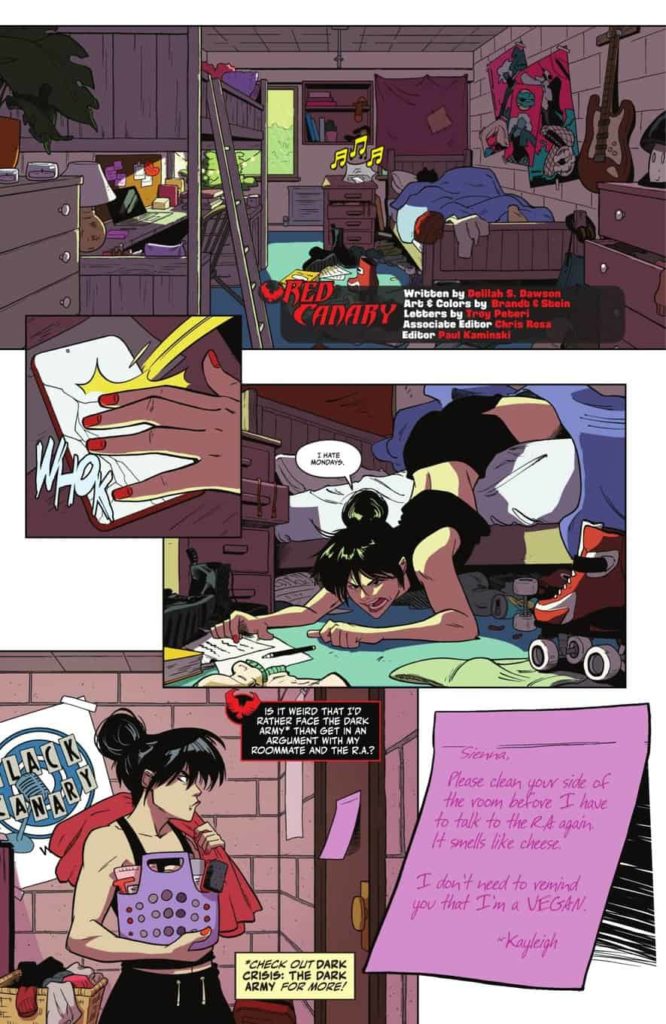
Off the bat, the opening page of this story establishes a sense of voice in myriad ways.
First, the colours by Brandt & Stein immediately sets this apart from your regular superhero fare. As contradictory as it sounds, there’s a kind of muted vibrancy here that works exceptionally well. Not only does it separate this story from the more photo-realistic approaches to lighting that you might see in more mainstream superhero stories, such as Dark Crisis, but it also captures that same contradictory nature of young adulthood.
On the one hand, Red Canary’s life is rendered with a vibrant palette of colours, reflecting the multitudes both of her and of her life. There’s the red of her action her persona, but that doesn’t dominate the page. There’s the lavender pink of the Black Canary posters on her walls and the note left on her door. I’d like to think the use of such a stereotypically feminine colour here is deliberate, suggesting to the reader that no amount of focus on non-sexualised physicality (her use of martial arts, and escrima sticks; her bed-head hair or toned muscles) should be mutually exclusive with her sense of femininity. Then, there’s the blues, also associated with her Black Canary posters – another subtle complication of gender norms, as the tributes to her idol appropriate stereotypically feminine and masculine colours, framing Red Canary’s space as one capable of exceeding what’s come before.
Maybe I’m just reaching with these ideas, coming off more like an optimistic English teacher than a critic as I try to convince you that the colour of her duvet has some deeper meaning, but I think the breadth of colour here is worth note. It’s rare to see such a spectrum on the page and have it not be messy or confusing, distracting from the flow of the narrative. Instead, it succeeds at conveying the busyness of Red Canary’s space, as her physical reality doubles as a metaphor for her emotional reality.
This is why I characterised it as ‘muted vibrancy’ – there’s a large palette in use here, but it’s not a glaring assault on the eyes.
(In fact, Brandt & Stein are notably reserved with where light plays into the page. This has little to do with creating a sense of voice, but I wanted to highlight how brilliantly light is used to sync up the reader with Red Canary. Following from panel to panel, we go from: a small patch of light breaking in from the window but not touching her, to the white screen of Red Canary’s phone, to her flopping out of bed half-lit and into the morning rays, to her walking out, completely lit. The reader’s view of Red Canary’s room (and her life) brightens, and in so doing widens, almost in rhythm with the character waking up. It’s this really subtle way of aligning a reader’s experience of becoming more and more conscious of a situation with the character’s, immediately shortening the emotional distance between the two. Superb stuff!)
Second, the use of narration here feels more authentic than the narration in Flatline’s story. While both stories try to evoke that highly self-aware, self-ironizing patter typical of some Gen-Z teenagers, it’s the easiness with which it sits in the scene that varies. For example, while Snider goes to great lengths to make Flatline sound relatable, like making her a K-Pop stan, it feels entirely incongruous with the moment in which the reader learns it. And yes, there is an argument to be made that undercutting Nika’s fight with Ubu with dialogue like this is an intentional choice, shifting the genre of the story from action-mystery to action-comedy, but it’s neither particularly funny nor does it embolden the action. So again, ultimately, it simply underscores the artificiality of the moment.
By contrast, Dawson balances the relatability and the emotional realism of her scenes more. A great instance of this is where Red Canary and Sideways try to repeat their initial success dealing with some Lazarus rain-enhanced creatures, as Canary leaps backwards off a living statue and towards the giant squid… only to immediately be caught in its tentacles. ‘Come on!’ she exclaims, ‘I don’t even eat calamari!’ Is it silly? Of course. But it fits in the tradition teen superheroes quipping to distract from the intense fear the feel – a Spider-Man special – and it helps to dramatically underline the fact that while Red Canary might have the most heroic of intentions, she is still very much limited to the skill set of a well meaning teenager with more escrima sticks than sense.
It’s a playful moment that reinforces the characterisation of the piece, ensuring that any attempts at relatability support the narrative and dramatic tension rather than undermine it.
Another success of Red Canary’s characterisation is that there is specificity to her experience that feels lived in. There are multiple references – ‘Something’s weird about this rain. Even for Seattle’, ‘Public art come to life? This is the most uniquely Seattle insanity I’ve ever seen’ – that convey the sense that Sienna is reacting in a way specific to her and her background. She’s a long-time resident of the city, she’s accustomed to a certain amount of weird, etc. It helps define for the reader what she would, and would not say, in other situations – something I might struggle to articulate with other characters created in Lazarus Planet.
Third, and most importantly, this story differs by centring events on Red Canary herself, rather than making her a narrative mechanism through which the actual subject of the piece has their narrative advanced. Her entire back-and-forth with fellow hero Sideways reinforces that. As they deal with the consequences of the Lazarus rain, they debate what it is that Sienna really wants to do, the weight of responsibility and her ability to manage that with personal satisfaction. It culminates in a reaffirmation of her own agency, as she decides not to let the world decide her path for her, but to instead go her own way.
How Does Lazarus Planet: Next Evolution Shake Out?
These stories feel indicative of the type of editorial mindset that has given life to recent titles like Batgirls, Aquaman: The Becoming, Monkey Prince, Blue Beetle: Graduation Day, Robin (2021), Superman: Son of Kal-El and Tim Drake: Robin. What excites me about these titles, and about Lazarus Planet: Next Evolution, is that DC seem to be truly re-investing in the YA/Coming-of-age superhero model in a way that should revitalise the genre, broadening the types of experiences that these narratives can speak to much in the same way that the introduction of Miles Morales or Kamala Khan did.
Despite my misgivings about elements of their presentation, The Vigil are a truly exciting concept in the superhero landscape that I hope Ram V and Lalit Kumar Sharma are able to delve into in their own series. And while I’m sure we’ll see certain Bat-related characters (re)appear, I hope these new characters are given just as much, if not more time, dedicated to exploring their unique corner of the DCU.
Similarly, while Flatline stumbles in its execution, inevitably bound up in the interconnectedness of it all, it still stands as a commitment that the new ideas creators like Williamson threw out there over the last couple of years aren’t being forgotten as soon as the relaunch comes around. More importantly, new creators are being platformed in such a way that they might take these recent creations and make something fresh and relevant of them. Flatline isn’t just being trotted out to call back to her relationship with Robin, or remind you manipulatively of that other book that you liked. She, among others, is being used to speak directly to that forgot audience – the ever-changing demographic of precious new, young readers – in a voice that is (largely) authentically theirs.
Dawson, Brandt and Stein’s work on Red Canary stands as a highlight in this collection – joining the upper echelon of stories included in Lazarus Planet as a whole. New as I am to this team’s work, I’m eagerly anticipating more of it from DC in the future.
Also, rounding out this collection is Deadeye’s introduction. I’ve avoided diving too much into this in this piece, as thematically I don’t believe it was contributing to most of the same discussions as the others. It certainly serves as another building block in the ever-growing monument to continuity, adding a new wrinkle to Amanda Waller’s situation that is likely to play into the wider Dawn of DC plans for 2023. Otherwise though, this story doesn’t have much to say in terms of establishing new voices. Just know that I thoroughly enjoyed the team’s contribution to the issue, providing a characterful action romp that I hope to see followed up down the line.
While not the strongest instalment in Lazarus Planet, Next Evolution is still a worthwhile entry that carries weight both in comics continuity sense, but also in highlighting emerging new voices to the medium.


